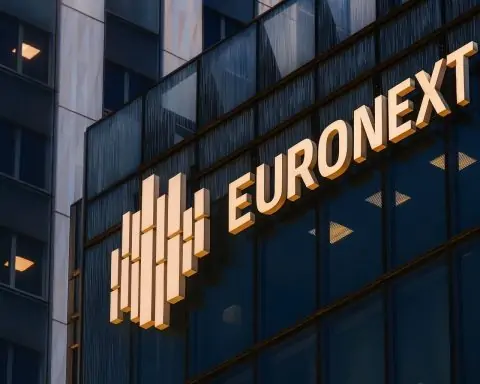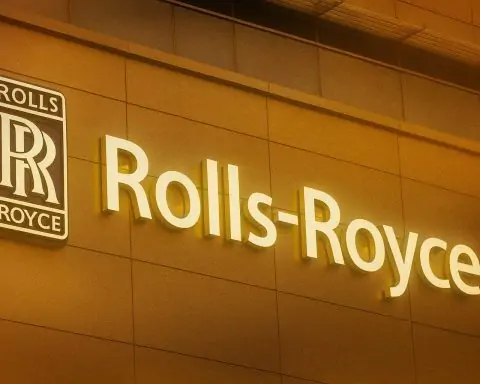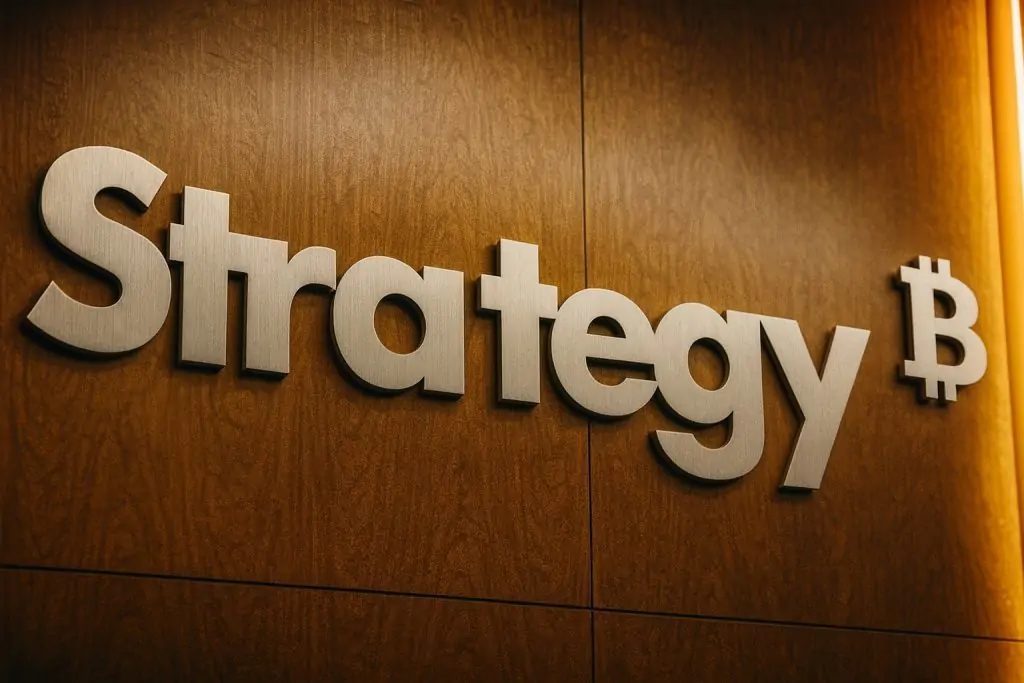On Tuesday, November 18, 2025, Vale S.A.’s stock is trading mixed between Brazil and New York as investors digest a dense news flow: new biodiesel and electric truck tests, fresh court decisions linked to past dam disasters, an upcoming hybrid bond, and continuing talk of extraordinary dividends.
Vale stock today: how VALE and VALE3 are trading
In New York (VALE, NYSE)
By early U.S. afternoon, Vale’s American Depositary Receipts (ADRs) were trading around $12.20–$12.21, up a few tenths of a percent on the day. Intraday, the stock has moved roughly between $12.05 and $12.24, after opening near $12.14. [1]
Over the past year, the ADR has gained about 22%, with a 52‑week range of roughly $8.06 to $12.60, and average daily volume close to 15.8 million shares, according to exchange data and historical price series. [2]
In São Paulo (VALE3, B3)
On the B3 exchange, Vale’s common shares (VALE3) have been hovering just below R$65, down around 0.4–0.7% on the session, according to intraday quotes and Brazilian market commentary. [3]
Even with today’s dip, VALE3 is still up about 27% year‑to‑date, outpacing the broader Ibovespa, which itself is slightly lower today, trading around 156,500–157,000 points as global risk sentiment softens on worries about U.S. rate cuts and tech volatility. [4]
The index-level note matters because Vale is one of the heaviest weights in the Ibovespa. Trading Economics and TradingView report that Vale shares slipped roughly 0.7% today even as benchmark commodity prices remain firm, adding to the index’s negative bias. [5]
Snapshot: key Vale headlines on November 18, 2025
For today, 18 November 2025, the main Vale‑related developments are:
- Decarbonization push: Vale launches expanded biodiesel (B30/B50) and electric haul-truck tests in Minas Gerais, targeting up to 35% emissions cuts from diesel use in its truck fleet. [6]
- Local iron‑ore expansion: Brazil’s antitrust authority CADE approves the leasing of a Vale iron ore deposit in Mariana (MG) to Cedro Mineração, enabling Cedro to ramp production from about 3 to as much as 10 million tonnes per year, with future projects potentially taking capacity to 20 Mt/y. [7]
- Brumadinho social aid ruling: A court in Minas Gerais orders Vale to deposit R$234.1 million within five days to guarantee continuity of income-support payments for people affected by the 2019 Brumadinho dam collapse. [8]
- Fundão dam and BHP ruling: The UK High Court finds BHP strictly liable for the 2015 Fundão dam disaster; the ruling notes Samarco was a joint venture between BHP and Vale, while a separate action against Vale is under way in the Netherlands. [9]
- Additional Fundão provision: Vale’s latest Form 6‑K (filed November 14) confirms an extra US$500 million provision for Fundão-related obligations in 2025, bringing total recognized provisions to about US$2.9 billion. [10]
- Hybrid bond in the market: Vale Overseas Limited is marketing a 30‑year subordinated U.S. dollar hybrid bond (long 30yr NC5), with talk around a yield in the “mid‑6%” area, following new ratings from Fitch and Moody’s. [11]
- Community engagement: Vale flags a “Videoconferência com as Comunidades” on its investor-relations site today, a virtual meeting with communities to discuss socio‑environmental plans tied to the Paraopeba basin and Brumadinho reparations. [12]
The combination of ESG progress, litigation updates, and fresh funding moves is what’s really steering sentiment around the stock today.
1. Hybrid bond and credit ratings: funding flexibility without over‑leveraging
Vale is leaning into hybrid debt to balance shareholder returns, capex, and massive remediation obligations.
- Instrument: Vale Overseas Limited plans a 30‑year subordinated bond with a first call after five years (NC5), effectively a hybrid security that sits between debt and equity in the capital structure. [13]
- Fitch rating: Fitch has assigned the proposed hybrid a ‘BBB‑’ rating, two notches below Vale’s long‑term issuer rating of BBB+ (Stable), and grants 50% equity credit because of its subordination, coupon‑deferral features and long effective maturity. [14]
- Use of proceeds: Fitch expects proceeds to be used for “general corporate purposes,” including replenishing cash after the tender for participating debentures, without pushing leverage above downgrade thresholds. [15]
- Moody’s view: Moody’s has assigned a Baa3 rating to the hybrid notes, while affirming Vale’s Baa2 senior ratings with a stable outlook, reinforcing the view that the transaction fits within current credit metrics. [16]
For equity investors, the key takeaway is that management is:
- Locking in long‑dated capital at mid‑single‑digit yields (in the “mid‑6%” area, according to IFR), [17]
- Preserving a conservative net‑leverage path (around 0.9x over 2025–27, per Fitch), [18]
- And keeping rating agencies comfortable even as it prepares for potential extraordinary dividends, heavy capex and ongoing remediation cash outflows. [19]
Hybrid issuance rarely moves a stock price intraday on its own, but it underpins the narrative that Vale can fund both growth and legacy liabilities without a dramatic change in its risk profile.
2. Green trucks: biodiesel and battery-electric tests as fresh ESG catalysts
Today’s most eye‑catching operational news is on the decarbonization front.
High‑blend biodiesel in ultra‑class trucks
Vale confirmed new field tests at the Mariana Complex (MG) with haul trucks running on B30 and B50 biodiesel blends (30% and 50% biodiesel mixed into conventional diesel), far above Brazil’s 15% legal blend level. [20]
Key details:
- The tests involve off‑highway trucks of roughly 150–190 tonnes capacity working in iron‑ore operations. [21]
- Each vehicle burns about 130 litres of fuel per hour – roughly 2,000 litres per day, so any efficiency or emissions gain has a big financial and environmental impact. [22]
- Lab and bench tests since 2023 suggest the higher biodiesel blends could cut CO₂ emissions by up to 35% versus standard diesel currently used by Vale in Brazil. [23]
- The field program will monitor truck performance for at least six months, checking whether higher biodiesel ratios can be adopted at scale without compromising haulage performance or reliability. [24]
Electric haul truck returns for extended trials
Alongside biodiesel, Vale is restarting tests of a fully battery‑electric haul truck, the XCMG XDR80TE (around 72‑ton payload), at the Capão Xavier mine in Minas Gerais. [25]
The truck was first trialled in 2022; after design tweaks, it has now returned for at least six months of additional testing focused on performance, energy efficiency and operational integration. [26]
Strategic context
These initiatives align with Vale’s broader decarbonization strategy, which includes:
- A target to reduce Scope 1 and 2 emissions by 33% by 2030 and reach net‑zero by 2050,
- Partnerships with Caterpillar and Komatsu to develop dual‑fuel (ethanol/diesel) trucks, [27]
- And cumulative decarbonization investments of around R$1.4 billion to date. [28]
ESG‑focused investors tend to view credible, capital‑backed decarbonization projects as supportive of valuation multiples over time, especially for large emitters such as iron‑ore and base‑metals miners.
3. Minas Gerais iron ore: CADE approval and production momentum
Domestic Brazilian news today also highlights a structural shift in Minas Gerais’ iron‑ore landscape.
Brazilian outlet Rede 98 reports that CADE has approved the leasing of a Vale iron‑ore deposit in Mariana (MG) to Cedro Mineração. [29]
- Cedro’s output is expected to grow from about 3 million tonnes per year to as much as 10 Mt/y, with future projects potentially pushing total capacity toward 20 Mt/y. [30]
- The deal breathes new life into regional production and introduces another medium‑sized player leveraging Vale’s mineral assets.
For Vale, the arrangement appears more strategic and regulatory than volume‑driven. It:
- Monetizes part of its resource base through leasing rather than direct operation,
- Helps ease competition and antitrust concerns in a state where Vale is dominant,
- And fits into a broader Brazilian iron‑ore project pipeline that analysts expect to keep leading national mining growth into 2026. [31]
This comes on top of strong Q3 operational numbers: Vale recently reported its highest quarterly iron‑ore output since 2018, with first‑nine‑months production of about 245.7 million tonnes and 2025 guidance pointing toward 325–350 Mt. [32]
Higher volumes at lower unit costs support cash‑generation capacity, which is central both to the dividend story and to absorbing legal and ESG expenditures.
4. Dam litigation and social reparations: Brumadinho and Fundão back in focus
Legacy tailings‑dam disasters remain a major overhang for the Vale equity story, and today brought several fresh developments.
Brumadinho: court orders new R$234 million guarantee
A court in Belo Horizonte’s 2nd Public Finance Court has ordered Vale to deposit R$234.1 million (about US$46 million) within five days. The funds are meant to guarantee the continuation of the Programa de Transferência de Renda (PTR) – a monthly income program for people affected by the 2019 Brumadinho dam failure at the Córrego do Feijão mine. [33]
Key points from the decision and local reporting:
- The ruling responds to a lawsuit brought by associations representing affected communities, which argue that PTR payments must continue until pre‑disaster living conditions are effectively restored. [34]
- A prior preliminary injunction had been temporarily suspended at Vale’s request, but the state appeals court revoked that suspension, reinstating full payment obligations. [35]
- The court relied on calculations by the Getulio Vargas Foundation (FGV), which estimated that about R$702.4 million would be required to fund PTR payments through January 2026; the new deposit covers roughly one‑third of that amount. [36]
In its response, Vale notes that it has already:
- Paid about R$2.4 billion in emergency support to roughly 100,000 affected people, and
- Allocated R$4.4 billion for the PTR within the broader Judicial Agreement for Integral Reparation. [37]
The company stresses that PTR is managed by public institutions and FGV, and that it considers itself current on its obligations — but the fresh deposit order underscores how Brumadinho remains a live legal and social‑license issue.
Fundão (Mariana) disaster: UK liability ruling and new provisions
Separate but related, there were two major updates around the 2015 Fundão dam collapse near Mariana, which involved Samarco (a joint venture between Vale and BHP).
- UK High Court ruling against BHP
- London’s High Court concluded that BHP can be held “strictly liable” for the Fundão collapse under Brazilian law, in a case brought by more than 600,000 Brazilian claimants. [38]
- The judgment emphasised that the dam, which released some 40 million cubic metres of waste, was owned by Samarco, a JV of Vale and BHP, and notes that both companies were deeply involved in Samarco’s operations. [39]
- A separate civil action against Vale is ongoing in the Netherlands, covering tens of thousands of plaintiffs. [40]
- Vale’s new US$500m provision and cost‑sharing agreement
- In a Form 6‑K filed November 14, Vale announced it will book an additional US$500 million provision in its December 31, 2025 financial statements for Fundão‑related obligations. [41]
- This comes on top of US$2.401 billion already provisioned as of September 30, 2025, taking recognized Fundão provisions to roughly US$2.9 billion. [42]
- Vale also disclosed a confidential agreement with BHP (signed July 2024) to share liability equally for any amounts either company is ordered to pay in the UK or Dutch proceedings. [43]
- A second‑stage UK trial on causation and generic damages questions is scheduled to start in October 2026 and run into Q2 2027, subject to appeals. [44]
Vale stresses that the US$32 billion “Definitive Agreement” signed in Brazil in October 2024 remains the central framework for full reparation and that expected cash outflows continue to match the guidance given with Q3 results. [45]
For equity holders, the message is mixed:
- The scale of provisions underlines the financial weight of past environmental failures,
- But the combination of court rulings, agreements and staged trials also reduces some uncertainty about the eventual range of outcomes and timing of payments.
5. Earnings momentum, dividends and Street sentiment
Today’s price action is unfolding against solid recent earnings and increasingly supportive analyst coverage.
Q3 2025 results: strong operations, lower costs
On October 30, Vale reported:
- Net operating revenue up 9% to US$10.4 billion, driven by higher volumes of iron ore, copper and nickel. [46]
- Pro‑forma EBITDA of US$4.4 billion, up 17% year‑on‑year and 28% quarter‑on‑quarter, helped by higher prices, lower freight and improved by‑product credits. [47]
- All‑in iron‑ore costs down 4% year‑on‑year to about US$52.9/t, with C1 cash costs around US$20.7/t, keeping the company within its 2025 guidance. [48]
- Copper and nickel all‑in costs slashed by 65% and 32% respectively, prompting management to lower 2025 cost guidance for both metals. [49]
EPS also surprised to the upside, with around US$0.63 per share versus an expected US$0.49, according to MarketBeat’s recap. [50]
Extraordinary dividends “likely” in coming months
In a post‑earnings call on October 31, CFO Marcelo Bacci said Vale is “likely to announce extraordinary dividends” in the coming months, citing strong cash flow and iron‑ore prices consistently above US$100 per tonne. [51]
Executives:
- Indicated that a proposed 10% Brazilian withholding tax on dividends sent abroad would have only a limited impact on shareholder returns, and
- Reaffirmed that expanded net debt is trending toward the mid‑range of its US$10–20 billion target, keeping room for distributions. [52]
What the analysts say
Across major brokers and data aggregators:
- Consensus rating sits around “Moderate Buy”, with 16 analysts’ 12‑month targets averaging about US$12.61, implying low‑single‑digit upside from recent prices. [53]
- Barclays recently raised its price target to US$14.50 and maintained an “Overweight” rating, citing a constructive view on Vale’s earnings and product mix. [54]
- Jefferies, HSBC and J.P. Morgan have also nudged targets into the US$13–15 band while keeping positive recommendations on the stock. [55]
- Wells Fargo lifted its target from US$11 to US$12 and kept an “Equal Weight” stance, highlighting improving base‑metals performance but taking a cautious view on iron‑ore prices. [56]
Algorithmic and technical services like StockInvest currently classify VALE as a “hold/accumulate” at these levels, reflecting modest near‑term upside in their models rather than a strong directional call. [57]
6. What today’s news means for Vale stock
Putting it all together, November 18, 2025 reinforces a few key themes for anyone tracking Vale:
- ESG is now a core value driver, not just a risk factor
- High‑blend biodiesel and electric haul‑truck trials, plus dual‑fuel engine partnerships, show real capex and engineering behind decarbonization, not just slide‑deck promises. [58]
- Legacy dam risks remain large but increasingly quantified
- The UK ruling against BHP, Vale’s fresh US$500m Fundão provision, and the Brumadinho PTR deposit order all add to near‑term noise but also clarify processes, timelines and cost‑sharing structures. [59]
- Balance sheet and funding tools look robust
- Hybrid bonds rated BBB‑/Baa3 with equity credit, low projected net leverage, and a long‑dated maturity profile suggest Vale has room to fund growth, remediation and dividends together. [60]
- Operational momentum and possible extraordinary dividends are supporting the equity story
- Record‑era iron‑ore production, falling unit costs, and explicit management hints at extra dividends underpin the case for continued capital returns, even if commodity prices or macro risk sentiment wobble. [61]
- Short‑term trading today is mostly macro‑driven
- The modest dip in VALE3 and slight gain in VALE ADRs are happening against a backdrop of global risk‑off trade, U.S. tech weakness and Fed‑cut uncertainty, rather than any single stock‑specific shock. [62]
For investors and traders, today is less about a sudden change in Vale’s fundamentals and more about incremental confirmation of existing narratives: a high‑cash‑flow, low‑cost iron‑ore and base‑metals giant, working through a long tail of environmental liabilities while trying to convince the market it can decarbonize and still pay attractive dividends.
As always, none of this is financial advice. If you’re considering an investment decision around Vale stock, it’s important to assess your own risk tolerance, time horizon, and need for professional advice before acting.
References
1. stockanalysis.com, 2. www.investing.com, 3. br.advfn.com, 4. finance.yahoo.com, 5. www.tradingview.com, 6. www.infomoney.com.br, 7. rede98.com.br, 8. bhaz.com.br, 9. macaonews.org, 10. www.stocktitan.net, 11. www.ifre.com, 12. vale.com, 13. www.ifre.com, 14. www.tradingview.com, 15. www.tradingview.com, 16. ratings.moodys.com, 17. www.ifre.com, 18. www.tradingview.com, 19. www.reuters.com, 20. www.infomoney.com.br, 21. www.infomoney.com.br, 22. www.infomoney.com.br, 23. br.advfn.com, 24. im-mining.com, 25. im-mining.com, 26. im-mining.com, 27. im-mining.com, 28. im-mining.com, 29. rede98.com.br, 30. rede98.com.br, 31. www.bnamericas.com, 32. vale.com, 33. bhaz.com.br, 34. bhaz.com.br, 35. bhaz.com.br, 36. bhaz.com.br, 37. bhaz.com.br, 38. shareprices.com, 39. shareprices.com, 40. macaonews.org, 41. www.stocktitan.net, 42. www.stocktitan.net, 43. www.stocktitan.net, 44. www.stocktitan.net, 45. www.stocktitan.net, 46. www.investing.com, 47. vale.com, 48. vale.com, 49. vale.com, 50. www.marketbeat.com, 51. www.reuters.com, 52. www.reuters.com, 53. www.marketbeat.com, 54. www.gurufocus.com, 55. www.gurufocus.com, 56. www.insidermonkey.com, 57. stockinvest.us, 58. im-mining.com, 59. shareprices.com, 60. www.tradingview.com, 61. vale.com, 62. www.tradingview.com








